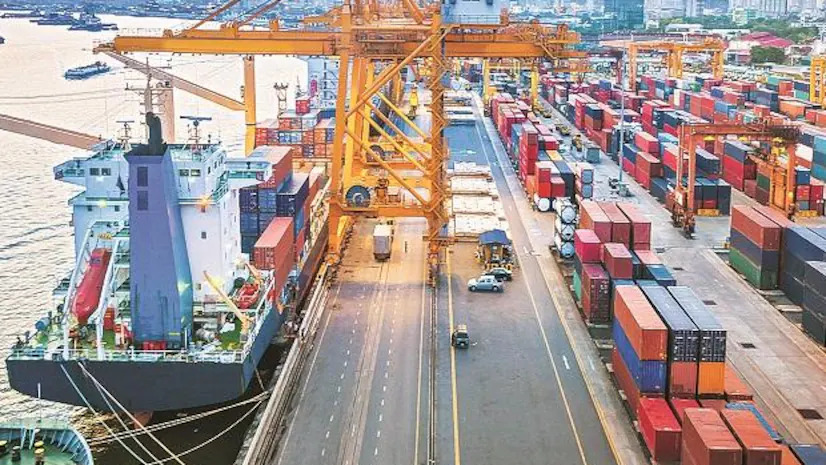View News
NAVIGATING-THE-COMPLEXITIES-OF-EXPORT-PROCEDURES-IN-INDIA

NAVIGATING THE COMPLEXITIES OF EXPORT PROCEDURES IN INDIA: A COMPREHENSIVE GUIDE
Introduction
International trade plays a pivotal role in shaping a nation's economic landscape, and India stands as a key player in the global export market. For businesses looking to embark on the journey of exporting goods from India, understanding the intricate procedures, regulations, and documentation is crucial. This comprehensive guide aims to walk you through the step-by-step process of exporting goods from India, ensuring a smooth and legally compliant experience.
Governing Authorities
The export landscape in India is governed by the Foreign Trade (Development & Regulation) Act, 1992, and the Export-Import (EXIM) Policy. The Directorate General of Foreign Trade (DGFT) serves as the primary authority overseeing export and import policies. To engage in export activities, businesses need to register with relevant authorities, including the income tax department, Reserve Bank of India (RBI), and obtain an Import-Export Code (IEC) number.
Export Procedure: A Step-by-Step Guide
Step 1: Receipt of an Order
Upon establishing the groundwork by registering with authorities, the exporter receives orders from foreign customers. These orders can come directly or through indent houses, which act as intermediaries between exporters and importers.
Example:
Let's consider a scenario where a textile manufacturer in India receives an order for a bulk quantity of cotton garments from a retailer in the United States.
Step 2: Obtaining License and Quota
Before proceeding with the export, the Indian exporter needs to secure an export license from the government. The Export Trade Control Authority issues these licenses, specifying the permitted total quantity of goods that can be exported.
Example:
Continuing with the textile manufacturer example, they apply for and receive an export license for the agreed quantity of cotton garments.
Step 3: Letter of Credit
To ensure a secure transaction, exporters often request a letter of credit from the importer. This letter outlines the terms of payment and provides financial security for both parties.
Example:
The U.S. retailer issues a letter of credit to the Indian textile manufacturer, ensuring payment upon the successful delivery of the ordered garments.
Step 4: Fixing the Exchange Rate
Exporters and importers mutually agree on the exchange rate to determine the value of the transaction in the respective currencies.
Example:
The Indian exporter and the U.S. retailer agree on an exchange rate for converting the total invoice value from Indian Rupees to U.S. Dollars.
Step 5: Foreign Exchange Formalities
Compliance with foreign exchange regulations is crucial. Exporters need to adhere to the Foreign Exchange Regulation Act and follow procedures specified by the RBI.
Example:
The textile manufacturer ensures that foreign exchange earned from exporting garments is disposed of as per RBI guidelines and that all shipping documents are processed through authorized dealers.
Step 6: Preparation for Executing the Order
Before shipping, exporters must make necessary arrangements, including marking and packing goods, obtaining inspection certificates, and securing insurance policies.
Example:
The textile manufacturer ensures proper packing of cotton garments, obtains inspection certificates from the Export Inspection Agency, and secures insurance coverage from the Export Credit Guarantee Corporation.
Step 7: Formalities by a Forwarding Agent
A forwarding agent, or custom house agent, plays a crucial role in obtaining permits, preparing shipping orders, and ensuring compliance with customs requirements.
Example:
The forwarding agent of the textile manufacturer obtains a permit from the customs department, discloses necessary details to the shipping company, and prepares the shipping bill.
Step 8: Bill of Lading
The exporter receives the Bill of Lading from the shipping company, providing an official receipt and detailing the goods loaded on the ship.
Example:
The textile manufacturer presents the receipt copy and receives the Bill of Lading, confirming the shipment of cotton garments.
Step 9: Shipment Advice to the Importer
Exporters inform importers about the dispatch of goods by sending a shipment advice along with necessary documents like packing lists and non-negotiable copies of the Bill of Lading.
Example:
The textile manufacturer sends a shipment advice to the U.S. retailer, providing details of the shipped garments.
Step 10: Presentation of Documents to the Bank
Exporters submit necessary documents, including the Bill of Exchange, commercial invoice, and shipping documents, to their bank for further processing.
Example:
The textile manufacturer submits all required documents to their bank for the realization of export proceeds.
Step 11: The Realization of Export Proceeds
To complete the export transaction, the exporter undergoes specific banking formalities to realize the proceeds of the export.
Example:
Upon submission of the necessary documents, the textile manufacturer receives payment in foreign exchange, completing the export transaction successfully.
|
Certainly, when shipping goods from India to abroad, you need to adhere to Indian export regulations and provide the necessary documentation to comply with international trade laws. Here's a breakdown of the key documents required for exporting from India as per Indian law: 1. Commercial Invoice: - Purpose: To document the transaction, providing details such as the description of goods, quantity, unit price, and total value. - Example: A commercial invoice indicating the sale of 100 units of electronic gadgets to a buyer in the United States at a unit price of $80, resulting in a total invoice value of $8,000. 2. Packing List: - Purpose: To itemize the contents of each package, including the type and quantity of goods, packaging materials, and weight and dimensions. - Example: A packing list specifying that the shipment consists of electronic gadgets packed in 10 cartons, each weighing 20 kg. 3. Shipping Bill or Bill of Export: - Purpose: Filed with Indian customs, this document provides details about the exported goods, their value, and the destination country. - Example: The shipping bill outlines the HS code, quantity, and value of the electronic gadgets being exported. 4. Bill of Lading (B/L) or Airway Bill (AWB): - Purpose: Acts as a receipt for the goods and a contract of carriage; B/L for ocean shipments, AWB for air shipments. - Example: A B/L indicating the departure and destination ports, consignee details, and carrier information for the shipment of electronic gadgets. 5. Certificate of Origin: - Purpose: Declares the country of origin of the goods, verifying their source. - Example: A certificate of origin confirming that the electronic gadgets were manufactured in India. 6. Letter of Credit (if applicable): - Purpose: If payment is secured through a letter of credit, relevant documents, including the commercial invoice and bill of lading, must comply with its terms. - Example: Submission of documents to the bank in accordance with the letter of credit requirements for the electronic gadgets shipment. 7. Customs Declaration for Electronic Export Processing Zone (SEZ): - Purpose: If exporting from a Special Economic Zone (SEZ), a customs declaration specific to SEZ may be required. - Example: A customs declaration highlighting that the electronic gadgets are being exported from an SEZ in India. 8. Insurance Certificate: - Purpose: Provides evidence of insurance coverage against loss or damage during transit. - Example: An insurance certificate specifying the coverage, risks, and terms for the shipment of electronic gadgets. 9. Export License (if applicable): - Purpose: Certain goods may require an export license, especially if subject to export restrictions or controlled by the government. - Example: An export license may be necessary for the export of specific technology-related products. 10. Shipping Marks and Numbers: - Purpose: Marks and numbers on packages aid in identifying and tracking shipments. - Example: Each carton containing electronic gadgets is marked with a unique identifier for easy identification and sorting. 11. Phytosanitary Certificate (if applicable): - Purpose: Required for agricultural products, confirming compliance with destination country phytosanitary regulations. - Example: A phytosanitary certificate for the export of plant-based components within the shipment. 12. Quality Inspection Certificate (if applicable): - Purpose: For products requiring confirmation of meeting specific quality standards. - Example: A quality inspection certificate for electronic gadgets, ensuring compliance with industry standards. 13. Export Declaration Form (EDF): - Purpose: Required by Indian customs, this form declares details of the goods being exported. - Example: An EDF detailing the specifics of the electronic gadgets being exported from India. 14. Exporter/Shipper's Declaration: - Purpose: A statement from the exporter affirming the accuracy of information provided in the shipping documents. - Example: An exporter's declaration confirming the accuracy of details in the commercial invoice, packing list, and other documents. |
Conclusion
Exporting goods from India involves a meticulous process, from receiving orders to the realization of export proceeds. Navigating the regulatory landscape, obtaining licenses, and ensuring compliance with documentation requirements are key to a successful export venture. By understanding each step and incorporating real-world examples, businesses can streamline their export operations and contribute to the growth of India's international trade.
Unlock the Potential of Legal Expertise with LegallMantra.net - Your Trusted Legal Consultancy Partner”
Article Compiled by:-
Mayank Garg
(LegalMantra.net Team)
+91 9582627751
Disclaimer: Every effort has been made to avoid errors or omissions in this material in spite of this, errors may creep in. Any mistake, error or discrepancy noted may be brought to our notice which shall be taken care of in the next edition In no event the author shall be liable for any direct indirect, special or incidental damage resulting from or arising out of or in connection with the use of this information Many sources have been considered including Newspapers, Journals, Bare Acts, Case Materials , Charted Secretary, Research Papers etc

